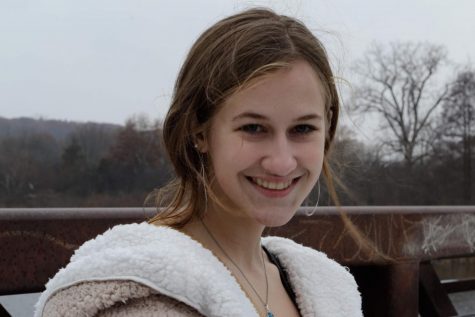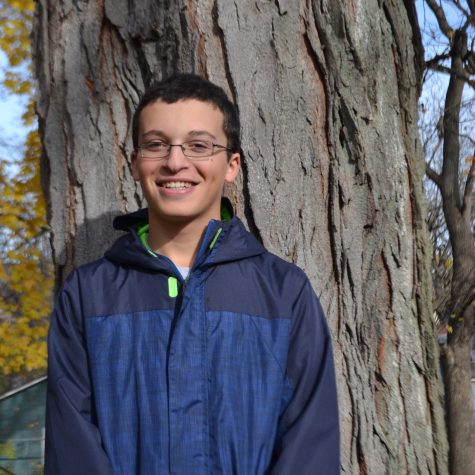Changing the Narrative: Bryan Stevenson Accepts the 25th Annual Wallenberg Award
Stevenson addressed the full auditorium Tuesday night. ““I want to talk to you about our capacity to change the world,” he began. This was a central theme of the lecture.
The auditorium was packed without an empty seat in sight. Chatter filled the entire room, until the lights above started to dim and the crowd settled in their seats. On the evening of Tuesday, March 7, Bryan Stevenson accepted the 25th annual Wallenberg Award. This award is presented by the University of Michigan to those who fulfill the idea that “one person can change the world.”
The Wallenberg Award was the creation of Jon Rush, professor of art and design at the University of Michigan. The name of the award is based on Raoul Wallenberg, who was a student at U of M and a humanitarian. He saved hundreds of thousands of Jewish people in the holocaust by issuing Swedish protective passports to fleeing refugees. The award has been given out to those who have committed their lives to fighting for civil rights since 1985.
Serving as a civil rights lawyer for more than 20 years, Stevenson has made it his goal to make sure that people under the age of 18 cannot be sentenced to death or life without parole. He has also worked on thousands of court cases defending those in ethnic and racial minorities, the poor, the disabled, women and children. His goal is to grant a fair trial to every inmate on death row all across the country.
Stevenson accepted the award graciously, and outlined his lecture in four key points. His first was to become involved, and get close in order to do so. “We cannot problem solve from a distance,” he said. “It’s what you see from up close that allows you to change the world.”
According to Stevenson, the narrative of American history has been ridden with fear and anger, which he believes are the keys to suppression in society. Throughout the lecture, Stevenson claimed that by making bold and sometimes uncomfortable-actions, we can change America’s views on race.
Stevenson explained that while attending Harvard law school, he was an intern for the Southern Prisoners Defense Committee (SPDC). His time as an intern forced him to get up close and uncomfortable. He was working with a group of lawyers who worked with inmates on death row. While there, he was asked to let a prisoner know he would not die in the next year. This man was the first condemned prisoner he had seen. “I remember how burdened with chains he was,” Stevenson said.
He was nervous, but he still delivered his news. The man lifted his eyes up. “Wait wait wait, say that again,” the prisoner said. “Say that again.”
Stevenson repeated the statement, and the inmate began to thank him. The two went on to talk for three hours. When the guards angrily came into the room and forcibly removed the prisoner, pulling chains tightly and placing shackles on his ankles. Stevenson said, “Don’t hurt him! It is my fault that we were talking for so long!” But as the prisoner was getting forcibly removed from the room, he kept calm and repeated this statement: “Bryan, don’t worry about this. You just come back.”
And then the man did something that shocked Stevenson. He threw his head back and began to sing ‘Lord plant my feet on higher ground,’ lyrics from a hymn Stevenson knew well. “When I heard him sing, everything changed for me,” Stevenson told the crowd in the auditorium. “I realized if he can’t get to higher ground, neither can I.”
Stevenson has worked tirelessly to protect clients from the death penalty. However, sometimes he cannot save the life of the people that he is trying so hard to protect. One of these cases Stevenson spoke of that night was to protect a mentally disabled man from death sentence.
By the state’s law, those with severe mental disabilities could not be sentenced to death. Stevenson brought this to the local, state, and federal courts, with one result: it was too late. The case went as far as the Supreme Court, but they said the same.
On the scheduled day of the execution, Stevenson had to make the call and let him know he was still going to die.
“When I called this man and told him that I wasn’t going to be able to save him, he started sobbing,” Stevenson said. “He then started trying to talk to me, but was stuttering badly. One of his conditions was that when he got nervous or overwhelmed, he stuttered. I couldn’t understand what he was saying, but tears were running down my cheeks. He eventually told me that he loved me.” As well, the man thanked Stevenson for trying to save his life.
Stevenson believes that to help fix the racial tensions in America, there needs to be a radical change in the historical landscape of the country revolving around slavery. The Equal Justice Initiative (EJI), which Stevenson founded in 1989 in Montgomery, Alabama, has worked to put landmarks at every lynching site in America.
“We [as a society] are afraid if we talk about these issues, we will have to punish ourselves,” Stevenson said.
This is not the mission of the EJI. Stevenson spoke on the need to embrace our history of racial inequality so that we can fix our problems through acknowledging and learning from our mistakes.
He said that too many young minorities are dying in prisons as a result of this narrative. Today in our country, ⅓ of black men are are expected to go to jail. For Latino boys, the statistic is ⅙.
Stevenson recalled a time in which he held a case for an African-American child who killed a man that beat his mother. This man happened to be the deputy sheriff of the town, and because of this the young boy was tried as an adult.
When Stevenson met the boy to ask him questions, not one word left his mouth in response. Stevenson leaned in to the young boy, and the boy reciprocated his movement. Stevenson told the boy he could not help him unless he spoke to him.
The boy began to weep, and instead of answering Stevenson’s questions, he began to tell him the horrors that had transpired at his time in prison. He had been beaten and raped by fellow inmates, and was traumatized and in need of help. “I was heartbroken,” Stevenson said.
Stevenson told the boy he would do everything in his power to get him out of there.
Just as he had put hope in that boy, Stevenson spoke of keeping your head up in the name of justice. He believes that there is no middle ground in fighting for civil rights. “You either have hope, or you are part of the problem,” Stevenson said.
“Hopelessness is the enemy of justice,” Stevenson said. “Hope is what gets you to stand up when others tell you to sit down.”
Although Stevenson believes it is important to recognize past civil rights accomplishments and advocates, Stevenson claimed that people should keep their sights on the work to be done and not just the past.
“I worry when I hear people talking about the Civil Rights movement,” Stevenson said. “I think we have gotten too celebratory. People talk about it like a three day carnival.”
The fight against racism, though, was not just a walk in the park. It took decades of hard work, which Stevenson said we should not take for granted.
“When people say make America great again, I want to know which decade they were talking about,” Stevenson said. His words were met with thundering applause.
The battle for equality among the people of the United States has a ways to go, but Stevenson believes that no matter who you are, you have the ability to help change the world. He called out the students in the audience and said “Don’t ever think that your grades are a capacity of your ability to change the world.”
And Stevenson admitted he is not perfect either. “I do what I do because I am broken too,” he said. However, this shouldn’t stop us from working towards equality and justice. “It’s in brokenness that we realize what it means to be human.”












